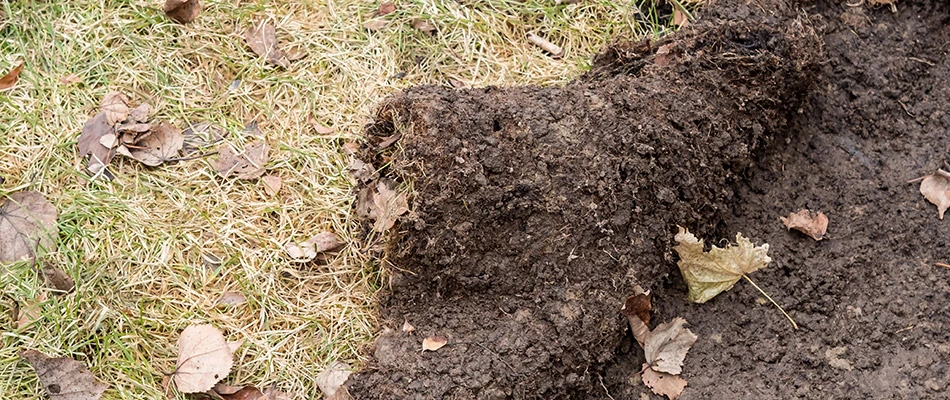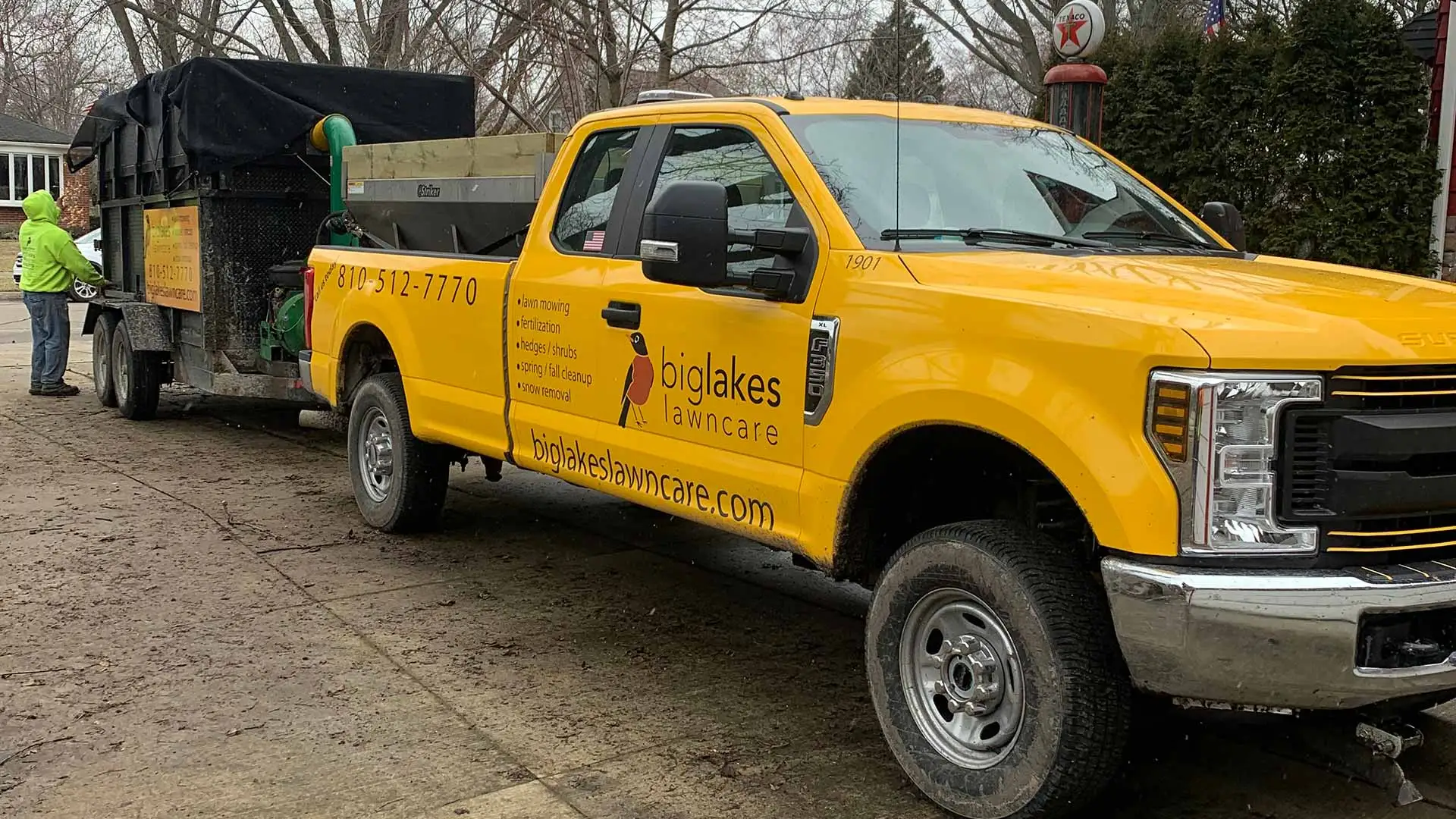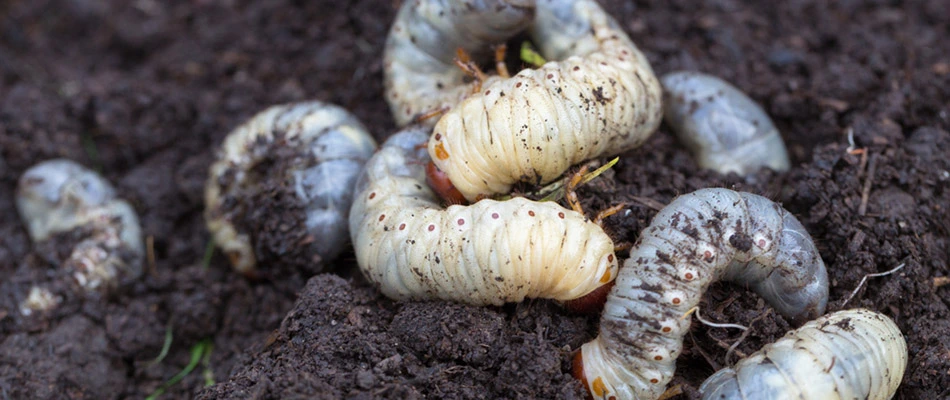Whenever property owners hear the words grubs, negative thoughts usually come to mind. It's true - grubs can really be considered a lawn's #1 enemy. Although healthy lawns can withstand a few grubs here and there, lawns that have not been maintained and cared for may be left with a lot of damage after a grub infestation.
It can also be hard to determine whether you have a grub infestation or not, and for some, the realization comes a little bit too late. Keep reading to find out how these grubs grow, the signs of a grub infestation, and how to prevent your lawns in Michigan from being attacked by grubs.
What are grubs?
Grubs are commonly known as tiny, white, C-shape insects, but what exactly are they? Grubs are the larvae of beetles. The type of these beetles can vary. It can be a Japanese beetle, a European chafer, or an Asiatic garden beetle, all of which are found in Michigan.
There are four stages in the life cycle of white grubs: egg, larvae, pupae, and adult. In the early summer months, the beetle will lay its eggs. By late summer, these eggs hatch into grubs. This is when grubs feed on your roots and do the most damage to your lawn. They actively feed until late fall, when they head deep into your soil to prepare for winter. Come early spring, grubs will move back to the surface of your soil and begin feeding again. When they are done feeding, they turn into pupae. They remain in your soil for several weeks as pupae and eventually transform into the adult beetle stage and dig their way out of your soil to lay eggs and repeat the process.
Signs of a grub infestation include spongy turf and brown patches.

Grubs are very destructive and their damage is very visible during late summer and up to early fall. They can kill off sections of your lawn, depending on how many there are. They are voracious eaters, munching on the roots of the grass until there is no more left. Once you notice the signs of a grub infestation, it's important to call in a professional team like ours to eradicate the problem.
There are several signs that you can watch out for that indicate a grub infestation:
- Spongy turf that rolls up like a carpet. This is a tell-tale sign of a grub infestation. If you notice your turf feels a little spongy under your feet, check to see if it pulls up easily. If your grass separates from your soil with no force, it's because grubs have made their way through your lawn and eaten your roots. There are no longer any roots to anchor your grass to your soil.
- An increase of birds and wildlife on your lawn. There are many animals that eat grubs as their food source. Aside from birds, look out for animals like moles, raccoons, and skunks. They will dig into your lawn looking for grubs, causing added damage to your turf. However, take note that these animals may also be looking for other food sources such as earthworms, so their increased presence does not necessarily always mean that you have a grub infestation.
- Brown patches and dead grass. Be on the lookout especially during late summer up to early fall, when their appetite is at its peak. Much like an increase of wildlife on your property, brown patches/dead grass does not necessarily always mean you have a grub infestation. Consult a professional to know for sure.
It's best to apply preventive treatment when dealing with grubs.
If your lawn receives proper watering and fertilization, a few grubs per square foot will most likely not do any harm. However, you never know how many grubs will show up to your property year after year. That is why it's best to get ahead of the game with a professional preventative treatment so that you won't have to worry about fixing their damage come fall time.
The best time to apply preventive treatment is sometime in June, before they hatch.
Want to protect your lawn from grubs? Call (586) 200-0855 today.
Whether you think you have a grub infestation problem or you just want to get ahead of the game, Big Lakes Lawncare can help you. We offer grub control services for Macomb, Shelby, Chesterfield, MI and other surrounding areas.
As mentioned above, it is best to take advantage of preventative grub treatment. However, if you skipped the preventative treatment this year and you're seeing some signs of grub damage, you can sign up for a curative treatment to prevent any further damage.
At Big Lakes Lawncare, we strive to improve the lives of our clients through all we offer by providing quality services. Call us at (586) 200-0855 so we can start protecting and treating your lawn right away.




Comments (0)
Thanks for your comment!
Thanks for your feedback! Your comments have been successfully submitted! Please note, all comments require admin approval prior to display.
Error submitting comment!
There is a problem with your comment, please see below and try again.